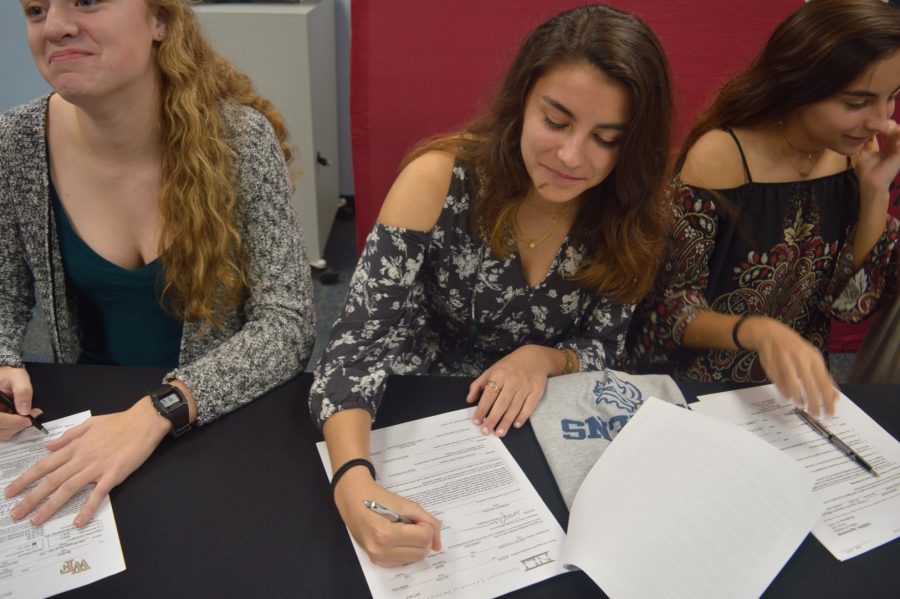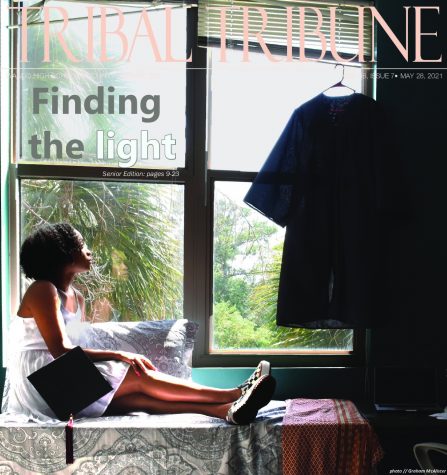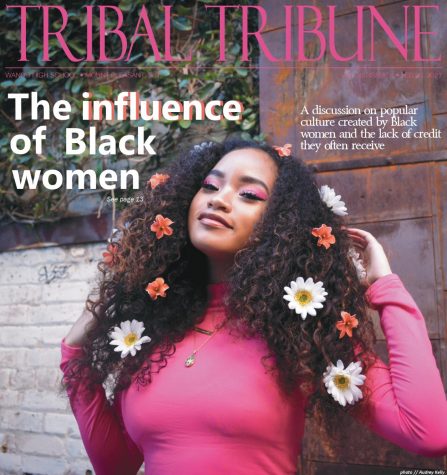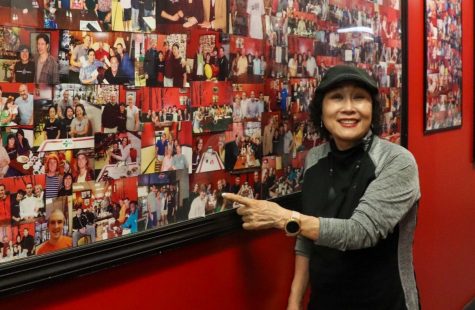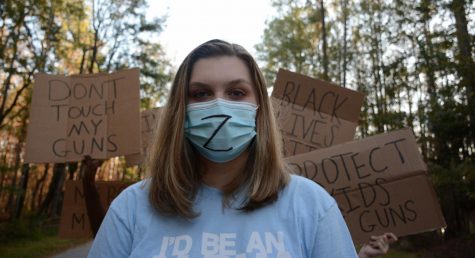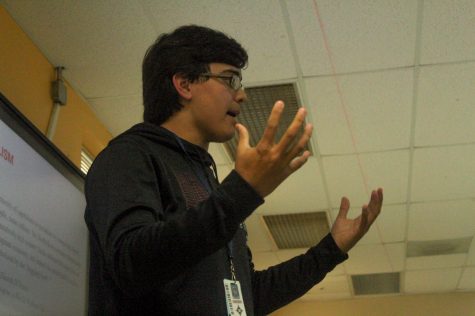The Recruiting Reality
A 14 year old just received the news that he made his high school’s varsity football team. As a freshman, that’s rare.
He starts summer workouts and earns a starting position in his last game of freshman year.
That’s when he gets the first call. The first call from a recruiter, offering him a scholarship to commit to playing at their college.
A collegiate coach has the right to approach a player as early as their freshman year with the intention of recruiting them. It is their right to do so, yet the implementation of this right has created controversy within the sports community.
The pressure of committing, of deciding where you want to spend four years of your life at such an age often creates the sense that sports are all that should be going into the decision, according to head football coach Jimmy Noonan.
“Ultimately the most important thing is getting the job done in the classroom. Folks can get too caught up in the sport itself, so that they lose sight of where it all starts,” Noonan said. “First, you have to prove that you are a college-worthy student and then the talent level and athletics come on board. I think people are definitely mixing that up nowadays.”
Early recruiting is not a new phenomenon, but it has increased in importance, with coaches offering teens at a younger age.
“In past years, even Division I prospects were not receiving scholarship offers until their senior year,” Noonan said. “But nowadays, if they’re talented enough and are a top prospect, they can be offered as early as their freshman year.”
So long as collegiate coaches follow the official NCAA rules regarding recruitment, early recruitment is legal — even as early as seventh grade in some of the NCAA-sanctioned sports.
“How has that impacted us at the high school level? What we’ve seen over the last 10-15 years is just the change in the recruiting landscape,” Athletic Director Bob Hayes said. “Because of combines, because of more exposure, because of even social media, you’re able to get your yourself out there a lot of different ways, and colleges are able to be recruiting kids earlier and earlier.”
The controversy comes in when recruiters don’t follow rules.
As a recruiter himself, Ralph Lundy, the head soccer coach at College of Charleston, makes sure he is kept up to date on all of the rules.
“You just have to know what you can do in what time periods. So when are you allowed to text them? When are you allowed to call them? When are you allowed to visit them? How many times can you watch them play?” Lundy said. “There’s so many rules, it’s unbelievable, and what we do is we just keep refreshing because the NCAA changes them every year in some fashion. You just have to keep up.”
During the process, the responsibility is up to recruiters that they are following the rules — which vary based on the sport. But the student athletes and their high school coaches generally attempt to stay aware as well.
“You have to stay abreast of what they recruiters can and cannot do in regards to contacting the players, although the ultimate responsibility falls on the recruiters shoulders,” Noonan said. “As far as we [Wando coaches] are concerned, we want to protect our players, we don’t want any issues there.”
Should there be an issue, usually an illegal contact, the recruiter must self report to the school’s compliance director and in some cases to the NCAA, Lundy said.
While the recruiter’s role is policy-based, the coaches of club sports serve a huge purpose in the process as well.
“They promote their players, so to speak, and contact college coaches and engineer that recruiting process between college coaches and their team members,” Lundy said.
This role generally applies to the high school coach as well, especially in certain sports such as football, according to Noonan.
“The coach is always the biggest link between the recruiter and player. Especially initially. After the initial contact is made, then the recruiters are in direct contact with the recruits, and obviously following the rules with social media is on the recruiter,” Noonan said. “But the recruiters always come back to the coach, especially in regards to the intangibles. What is the player’s character like? What’s his work ethic? Is he punctual? Is he dependable? And how do you feel, coach, that he would fit into our program and our scenario? They always come to the coach.”
It’s not a simple process, and it isn’t stress-free.
“It was probably the most stressful thing I’ve ever endured in my entire life. Trying to figure out where you wanted to go [to college] freshmen year is totally unrealistic,” senior soccer player Lauryn Jennings. She originally committed to an out-of-state school but decommitted in August 2016. She has since committed to Winthrop University for the 2017 fall semester. “But that’s what athletes who want to play in college have to figure out nowadays, where they want to go early on and then get that coach’s attention freshmen year, and go on from there.”
Choosing a school at as young as 14 has the potential to be the completely wrong decision.
“I think many student athletes make decisions when they’re too young,” Lundy said. “Kids are committing at ninth grade and all kinds of things happen with a young person. I don’t think it benefits the kids the way it should… If a girl commits when she is in ninth grade, what’s her attitude when she is in 11th grade?”
As a student athlete, Jennings agrees early commitment can be extremely difficult to get right.
“Me freshmen year versus me now is 100 percent a different player. The problem is, it pressures the kids into making decisions that they’re not ready for,” she said. “It’s dangerous, and I’ve seen it happen to so many players. They commit freshman or sophomore year and then they plateau in their performance when the coach was expecting them to keep getting better. Then the coach will drop them or the kid will go in for their first year and transfer immediately because it’s nothing like what they thought it would be.”
For junior volleyball player and Syracuse commit Keeghan Andrews, the decision to go through this process and commit early was the right one.
“Early recruiting was a very positive experience. It was so busy, but I got to visit many different universities and spend time with different coaches and players,” Andrews said. “I’m not worried about my early decision. I’ve had multiple visits to Syracuse and spent a great deal of time with the coaches and players on and off the court. I love everything about the school, coaches and players.”
The unpredictable nature of the college sports programs is still one of the biggest concerns regarding early recruiting for the students and coaches, Hayes said.
“You could commit as a freshman, and obviously that university has offered, but it’s a handpick. They can change their mind, there can be a coaching change, you could have a lot of things happen between that freshman and senior year, that affect whether it actually will happen,” he said. “Of course the student athlete can change their mind too. It’s a two-way street. I just think it’s a little bit of a situation in which the colleges really have nothing to lose. For the colleges, it’s a feather in their cap. They’re just throwing a big net, and then they’re going to cut it down and pick out the kids they want.”
But when it comes down to it, it’s the student athlete’s decision on where they are committing. Regardless of what year they were recruited, whether they were ready to make the decision or not, it’s up to them on the day they sign that National Letter of Intent — Feb. 1.
“We don’t steer them in any direction,” Noonan said. “We just want to make sure that they are getting the questions answered that they need to be asking and that ultimately that their decision is going to be fruitful for them and help them get a solid degree and allow them to continue to play the sport that they have grown to love.”


